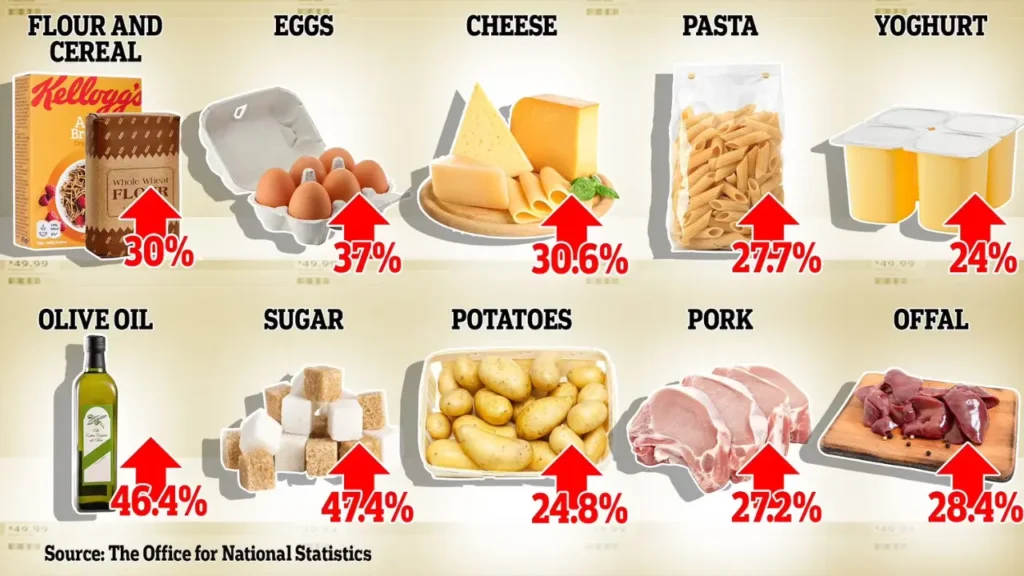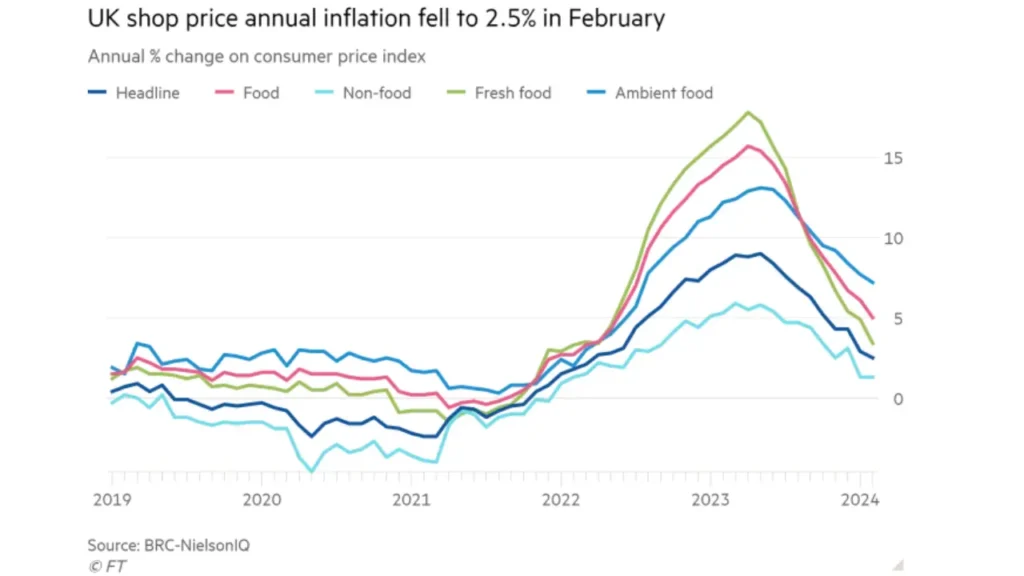UK Food Prices Inflation Warning What You Need to Know in 2025
The UK food prices inflation warning has been making headlines across the country in 2025. Families are feeling the impact. From supermarkets to local grocery shops, food items have become noticeably more expensive week after week. People are worried because rising prices make it harder to buy everyday necessities like milk, bread, and vegetables.

What Is Causing This Sudden Rise in Prices?
The main reason behind the UK food prices inflation warning is a mix of higher wages, energy bills, and supply chain problems. Since April 2025, changes like increased minimum wages and employer taxes have raised the cost of running businesses. Food companies pass these new costs to shoppers, which is why you’re paying more for the same food you bought last year.
Wage Hikes Affect Supermarket Prices

In 2025, the government increased the minimum wage by 6.7%, making it more expensive to employ staff. Retailers now pay more for workers, transport, and energy—these rising costs directly impact grocery shelf prices. Food producers are adjusting prices to cover their new expenses, contributing to the ongoing UK food prices inflation warning
Energy and Water Bills Matter Too
It’s not just food factories that are affected; utilities are more expensive, and the entire system feels the pressure. In April alone, water and sewerage bills rose by 26.1%, and the energy cap increase added more stress to household budgets. With businesses paying more to keep the lights on, every link in the food chain costs more, raising prices at checkout.
Experts and Retailers

Retailers and economists have spoken openly about the UK food prices inflation warning and what’s coming next. Many believe prices will keep rising throughout the summer, even if inflation slows in other areas of the economy. The British Retail Consortium expects an average food price increase of 4.2% by the end of 2025, especially for fresh foods.
Healthy Foods Are Becoming More Expensive Than Unhealthy Ones
Surprisingly, healthy foods are seeing sharper price hikes compared to sugary or processed snacks. Experts worry that this trend will hurt lower-income families who are trying to eat better and stay healthy. The UK food prices inflation warning highlights how food inequality may increase, affecting overall public health.
Closer Look at the Numbers
Let’s examine how some of your everyday food items are changing in price this year.
| Food Item | 2024 Price (£) | 2025 Price (£) | Price Increase (%) |
|---|---|---|---|
| Milk (2L) | 1.30 | 1.50 | 15.4% |
| Bread (800g loaf) | 1.10 | 1.30 | 18.2% |
| Eggs (12 pack) | 2.00 | 2.35 | 17.5% |
| Fresh Tomatoes (kg) | 1.90 | 2.20 | 15.8% |
| Cheddar Cheese (kg) | 6.50 | 7.50 | 15.4% |
Table: Price changes in basic grocery items from 2024 to 2025.
These numbers clearly support the UK food prices inflation warning being shared by major supermarkets and media
People Are Adapting to the Price Hikes
Many households are adjusting their habits to manage rising grocery bills. Some are shopping at discount stores more often. Others are planning meals more carefully, reducing waste, and freezing items to stretch their budgets. A few people have even started growing vegetables at home or using ice water to bring limp produce back to life
What Role Does the UK Government Play?
The government has tried to help by signing new trade deals with the EU to make food imports cheaper. Although the deal is a step in the right direction, the benefits might take months to appear in stores. Meanwhile, families must continue to deal with the effects of the prices inflation warning on their wallets.
Expectation in the Coming Months
Inflation in other sectors may ease, but food prices could stay high for a while, according to economic forecasts. The Bank of England is being cautious with interest rate cuts, fearing it could cause more inflation if done too fast. Until prices become more stable, the prices inflation warning will remain a top concern for millions of people.
Final Thoughts
The UK food prices inflation warning is more than just a news headline—it’s a real issue affecting everyone’s daily life. With increasing costs from wages, energy, and supply chains, food prices will likely remain high through 2025. Understanding why prices are rising and how to adapt can help families make better choices during these tough times. As we move forward, keeping an eye on budget-friendly shopping and smart food practices will be more important than ever.



